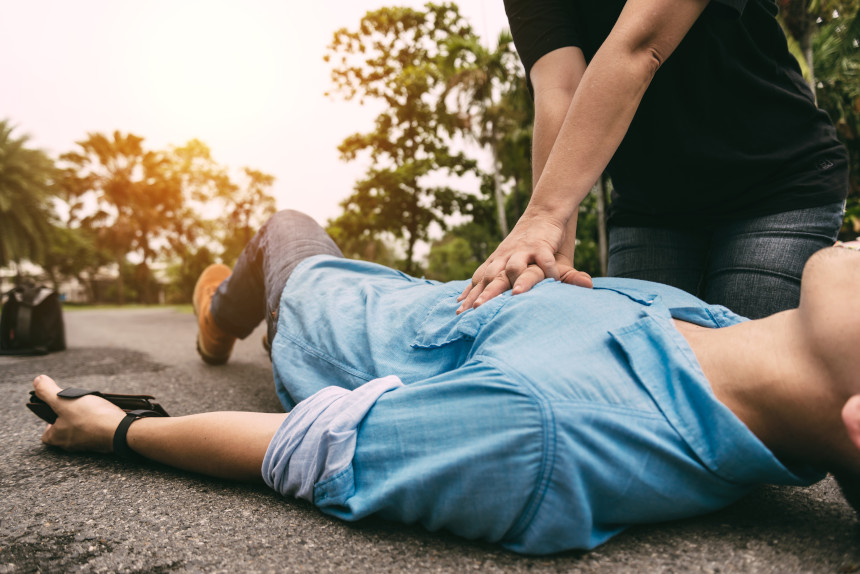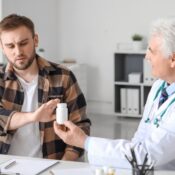“Your Health Checkup” is our online column by Dr. Douglas Zipes, an internationally acclaimed cardiologist, professor, author, inventor, and authority on pacing and electrophysiology. Dr. Zipes is also a contributor to The Saturday Evening Post print magazine. Subscribe to receive thoughtful articles, new fiction, health and wellness advice, and gems from our archive.
Order Dr. Zipes’ new book, Bear’s Promise, and check out his website www.dougzipes.us.
Twenty years ago, when I was president of the American College of Cardiology, I wrote a president’s page commentary about the terrible toll inflicted by out of hospital cardiac arrest (OHCA), still responsible for almost 1,000 deaths daily in the U.S. I envisioned a Neighborhood Heart Watch Program I called Save A Victim Everywhere (SAVE) that would rely on citizen responders to be called and arrive first on the scene to administer lifesaving cardiopulmonary resuscitation (CPR) and/or apply a shock from an automated external defibrillator (AED). These are the two most important approaches to increase the appallingly low survival rate (5-8 percent) from OHCA in most places in the U.S. I also suggested that AEDs be made as available as fire extinguishers and be placed in readily accessible locations.
SAVE is based on the concept of a good-neighbor policy — similar to volunteer firemen and neighborhood watch programs — that could have a major impact on this scourge of modern civilization. I envisioned ordinary citizens trained to perform CPR and apply an AED and suggested that the number of such trainees could be increased if we taught such skills to high school students in public safety or health classes. When a cardiac distress call came into the 911 dispatch center, it would immediately be shunted to both the paramedics (EMS) and the nearest AED-equipped and -trained neighbor. This could increase the number as well as decrease the time-to-application of bystander applied AED shocks, the latter presently occurring in less than 10 percent of OHCAs. If necessary, drones could be used to deliver the AED to the OHCA site.
Such programs exist today in several places. For example, in Denmark, as noted in a recent publication, over a period of one year, citizen responders located about one mile from the OHCA victim were dispatched by cell phone to begin CPR or retrieve and apply an AED. Investigators noted that citizen responders arrived before EMS in 42 percent of 438 cardiac arrests, almost doubling the odds for bystander to begin CPR and more than tripling the odds for bystander application of a shock from the AED. They did not report clinical outcome.
Investigators in Germany compared outcomes for mobile rescuer-initiated CPR (94), EMS-initiated CPR (359), and lay bystander-initiated CPR (277) in 730 OHCAs. They found that mobile rescuers arrived in four minutes versus seven minutes for EMS. Outcome was also better for mobile rescuer responders with higher hospital discharge rate (18 percent) compared with EMS (7 percent). Better neurological outcomes were seen in 11 percent of mobile-rescuer patients compared with 4 percent of EMS patients (not statistically significant).
A recent review of community first responders found that such interventions resulted in increased rates of CPR or AED shocks performed before EMS arrival. However, the authors concluded that it remained uncertain whether this translated into significantly increased rates of overall patient survival and suggested that further study be performed.
Despite that cautious conclusion, since numerous studies have shown that time to first application of CPR and/or application of an AED shock are absolutely critical and that earlier application is associated with improved survival, it would seem to me that if such an outcome could be achieved with a good neighborhood heart watch policy, it would help save lives.
Citizen leaders interested in creating such a program should contact local authorities and, in collaboration with health care leaders, consider crafting SAVE for your neighborhood.
Featured image: Platoo Fotography / Shutterstock
Become a Saturday Evening Post member and enjoy unlimited access. Subscribe now



